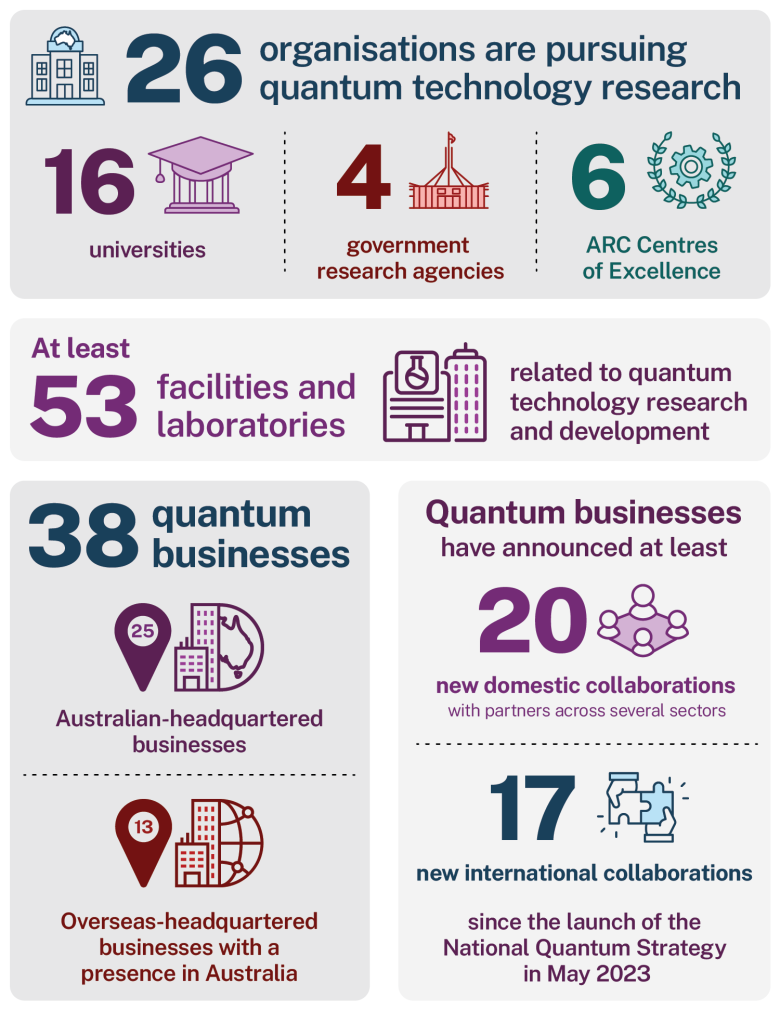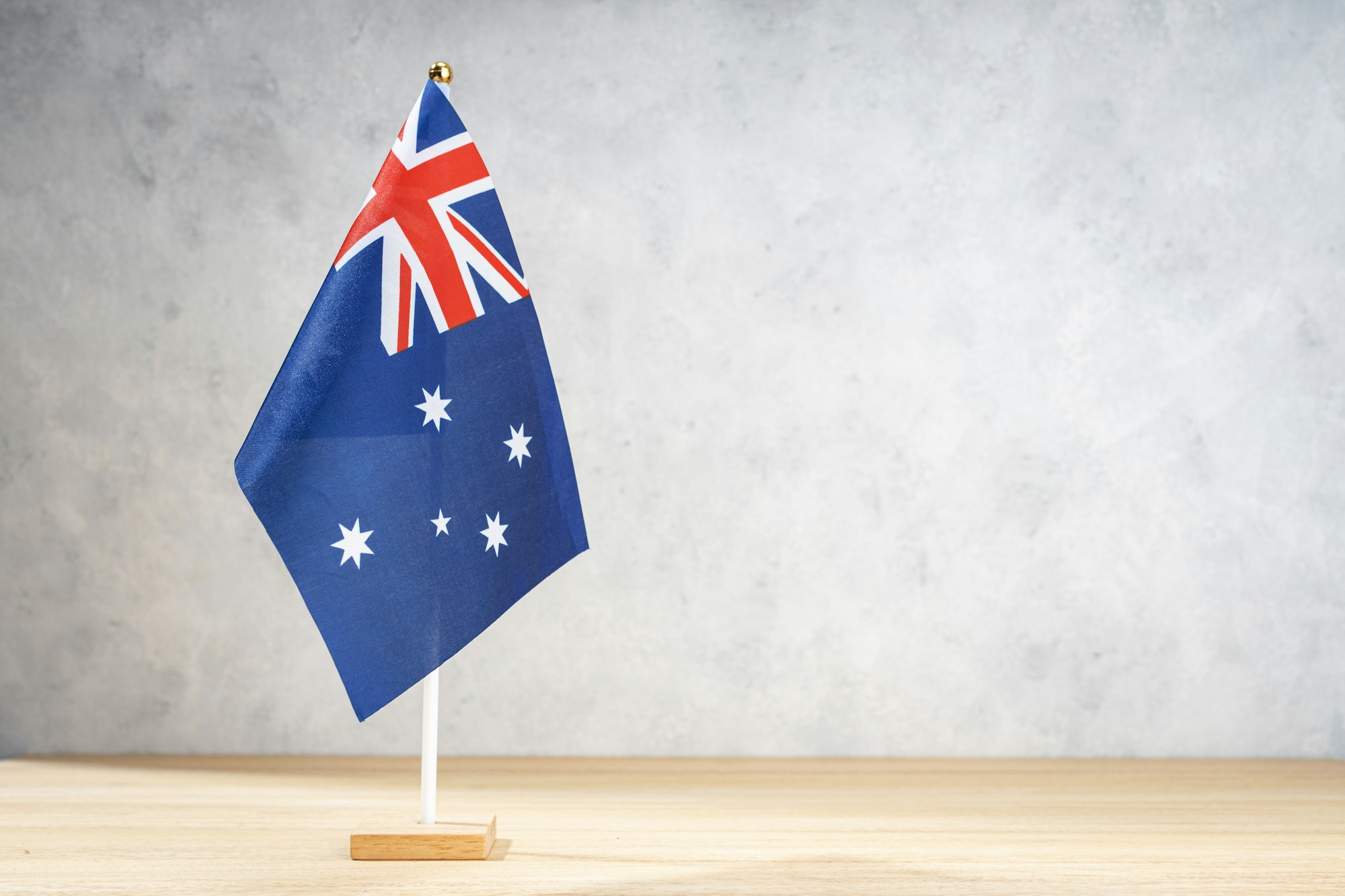Insider Brief
- Australia’s quantum industry is projected to become a $6 billion sector, creating nearly 20,000 jobs by 2045, according to the State of Australian Quantum report, which details the nation’s early steps in developing a globally competitive quantum ecosystem.
- Significant government investments, including $940 million for PsiQuantum and $1 billion through the National Reconstruction Fund, are bolstering research, supporting quantum startups, and building partnerships with industry leaders to accelerate growth.
- While milestones have been reached, challenges remain; Australia’s quantum strategy highlights the need for patient capital, improved IP frameworks, talent retention and greater public awareness to reach its 2030 vision.
Australia is doubling down on its commitment to quantum technology, aiming to transform the sector into a $6 billion industry that could employ nearly 20,000 Australians by 2045, according to the latest State of Australian Quantum report.
Released a year after the government launched its National Quantum Strategy, the report highlights milestones achieved through federal and state investments, the establishment of new research centers, and significant industry collaborations. The government’s focus on quantum as a strategic priority is evident, with substantial funding directed toward research and commercialization initiatives to strengthen Australia’s position in the global quantum landscape.
The focus has led to more attention for quantum, writes Cathey Foley, Australia’s Chief Scientist.

“In the past year, quantum has become a common topic on the front pages of newspapers, in governments and in businesses – it’s even discussed in taxis! Australian quantum science and technologies are winning awards, attracting investment and increasing the number of products and services that offer quantum capabilities,” Foley writes. “Perhaps most importantly, we are showing how well the quantum sector works together in developing a thriving ecosystem, while boosting engagement with the wider community.”
Expanding Quantum Sector and Economic Potential
The State of Australian Quantum report estimates that the nation’s quantum industry, bolstered by targeted investments, could contribute $6 billion to the economy and create 19,400 jobs by 2045. Quantum technology, which enables advanced computing and sensing applications beyond the reach of classical systems, has significant implications for sectors ranging from national security to healthcare. The report underscores Australia’s ambition to leverage quantum for both economic and societal benefits, projecting it as a pillar of national growth over the next two decades.
Government support has been extensive, with programs like the Industry Growth Program and the National Reconstruction Fund (NRF) aimed at fostering early-stage and growth-ready companies. Additionally, the Australian and Queensland governments jointly invested $940 million in PsiQuantum to establish the company’s Asia-Pacific headquarters in Brisbane, aiming to build one of the world’s first utility-scale fault-tolerant quantum computers. According to the report, these investments will not only drive revenue but also encourage job creation across the country.

Key Initiatives Supporting the Quantum Ecosystem
The report offers an overview of the government’s multi-faceted approach to building a robust quantum industry. In particular, the $1 billion allocation through the NRF underscores Australia’s commitment to critical technologies. Another $18.4 million investment established Quantum Australia, a national initiative that supports collaboration among industry, research, and government entities. Quantum Australia aims to accelerate industry growth and solidify the nation’s role in the global quantum ecosystem.
The government has also launched the Critical Technologies Challenge Program (CTCP), dedicating $36 million to support partnerships between quantum businesses, researchers, and end users to tackle pressing challenges of national importance. These initiatives have contributed to significant advancements, with companies unveiling technology roadmaps, securing funding, and forming partnerships with global tech firms.
Raising Public Awareness and Recognizing Quantum Achievements
Public awareness of quantum technologies has increased, aided by high-profile events and awards that underscore Australia’s research excellence. Professor Michelle Simmons, known for pioneering silicon quantum computing, received the Prime Minister’s Prize for Science in 2023, a testament to her role in driving the field forward. Dr. Andrew Horsley, awarded the Prime Minister’s Prize for New Innovators in 2024, was recognized for his work in making quantum computing accessible for everyday use.
Events such as the Quantum Australia conference and the Quantum Meets series have connected the quantum industry with the broader community. Initiatives like Quantum Tech Camp and Quantum Girls, aimed at promoting quantum careers, are building interest in the field among the next generation.
Addressing Industry Challenges
While the report ultimately paints a positive picture, it also outlines key challenges facing Australia’s quantum sector. Securing access to “patient, trusted capital” is one such challenge, as quantum companies often require long-term investment for commercial development. Additionally, the report notes that current intellectual property arrangements may inhibit the commercialization of quantum technologies, potentially slowing industry growth.
Competition from other countries for talent and investment poses another hurdle. With quantum’s strategic value recognized worldwide, Australia must work to attract and retain skilled researchers and industry professionals. Low public awareness of quantum technology further complicates efforts, as limited understanding among the general population could impact support for industry initiatives and workforce development.
Coordinated Government Efforts and Key Partnerships
Quantum policy and funding involve multiple Australian government departments, with several programs prioritizing the sector. Initiatives such as the Advanced Strategic Capability Accelerator (ASCA) and Australia’s Economic Accelerator program (AEA) have earmarked quantum technology as essential for the nation’s future. Meanwhile, the Cooperative Research Centre – Projects program (CRC-P) and the Industry Growth Program (IGP) are directly supporting quantum research and innovation. The Australian Research Council (ARC) has also played a significant role, awarding prestigious Laureate Fellowships and funding new centers such as the ARC Centre of Excellence for Quantum Biotechnology.
State and territory governments have been instrumental in driving regional quantum capabilities, with investments in local infrastructure and strategies that leverage state-level competitive advantages. These contributions enhance Australia’s overall quantum capabilities, fostering a national ecosystem that benefits from diverse research and industrial strengths.
International Collaboration and Market Access
Australia’s quantum strategy includes strong international partnerships, which the report highlights as crucial to maintaining a competitive edge. The Quantum Development Group (QDG) was established to secure resilient supply chains and foster global quantum collaboration based on shared values. Additionally, Australia has signed joint statements on quantum cooperation with the United States and the United Kingdom, facilitating knowledge exchange and market access across borders.
The country also participates in the Multilateral Dialogue on Quantum (MDQ), an initiative that aims to coordinate quantum development internationally. The Quad Investors Network Centre of Excellence in Quantum Information Sciences, involving Australia, the U.S., Japan, and India, aims to increase collaboration and market access among these nations. Furthermore, the Joint Technical Committee on Quantum Technologies has been set up to streamline technical standards and optimize expert resources globally.
Next Steps in Australia’s Quantum Journey
While significant progress has been made, the report notes that the next stage of the National Quantum Strategy will focus on workforce development, essential infrastructure, and supply chain resilience. Building a skilled quantum workforce is critical, with an emphasis on preparing professionals for roles across research, commercialization, and application. Investment in infrastructure for academic and commercial research will also support Australia’s goals of becoming a quantum leader by 2030.
Understanding the quantum supply chain to identify vulnerabilities and opportunities will be another priority. Ensuring robust supply chains is critical for national security and for maintaining Australia’s competitive position. According to the report, the path forward will require continued collaboration across government, industry and academia to meet these goals.
This article is meant to be a summary and could miss points — Please read the complete report and executive summary here.


















